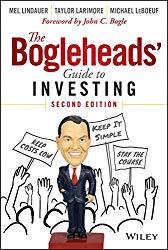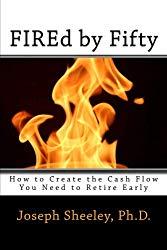Most investors use mutual funds to invest for several good reasons:
- They are easy to invest in, allowing you to send in whatever amount of money you wish after an initial investment.
- They don’t require that you understand how to place a stock order.
- They provide easy diversification, meaning that you don’t have all of your money in one or two stocks.
That said, investing in mutual funds can be intimidating, mainly due to the number of funds out there and the difficulty in sorting through all of the sales pitches. In addition, just figuring out the mechanics of investing in mutual funds can seem daunting if you are not used to investing. Luckily, with just a little knowledge, you’ll find that investing in mutual funds is actually really easy. In this article, we’ll go through everything you need to know to start investing today.
(Note, if you click on a link in this post and buy something from Amazon (even if you buy something different from where the link takes you), The Small Investor will receive a small commission from your purchase. This costs you nothing extra and is the way that we at The Small Investor are repaid for our hard work, bringing you this great content. It is a win-win for both of us since it keeps great advice coming to you (for free) and helps put food on the table for us. If you don’t want to buy something from Amazon or buy a book, how about at least telling your friends and family about our website as a great place to learn about investing and personal finance. Thanks!)
Choosing a brokerage house or fund family
To buy or sell stocks, bonds, mutual funds, etc…, you need someone who has access to these markets. Traditionally individuals would work with someone called a broker who would execute trades for them. These were places like Merrill Lynch, Smith Barney, Brown and Company, and Charles Schwab. With mutual funds, you have the ability to go through a regular brokerage house to buy funds, but the funds you’ll buy will tend to be high-cost with something called a “load.” This is a fee that your broker and the fund company pockets to allow you to buy shares in the fund. If the funds you could buy through a brokerage house did well enough to justify the fees charged, this would be the way to go. Unfortunately, history has shown that they don’t, meaning you’ll lose one to two percentage points of return each year, plus five to ten percent from the start when you buy the fund and pay the load, if you go with one of these funds. (Note, if you really want to buy mutual funds through a brokerage house for some reason like you already have an account there, buy Exchange Traded Funds, or ETFs, instead. You can learn more about ETFs here.)
Instead, the strategy recommended is to buy index mutual funds and to buy them directly from the fund companies. A great book explaining all of the ins-and-outs of index mutual fund investing is The Bogleheads’ Guide to Investing

Two fund companies recommended (there may be others, but let’s just look at two to keep things simple) are Vanguard and Charles Schwab. Vanguard is the creator of the index fund and has a wide array of funds to buy. Charles Schwab actually beats out Vanguard in price slightly (although the costs are so low, either fund family would be fine. Schwab is also a brokerage, meaning that you could also buy individual stocks if you choose to do so. (If you do want to learn about individual stock investing, SmallIvy Book of Investing: Book 1: Investing to Become Wealthy

Opening an account
Opening an account with either mutual fund family couldn’t be simpler. With just 15 minutes and some financial information, such as your address, social security number, etc…, you can open an account through the website of either. There is also great customer support if you need some help. Once you’ve filled in all of the forms, you just need to put funds in the account. This can be done by sending in a real or electronic check or transferring money electronically from a checking or savings account. The staff at these fund families is happy to help and provide more information.
Each fund has a minimum, typically between $3,000 and $5,000, so you should raise at least this much money before opening an account. Many brokerages/fund families will allow you to invest lower amounts if you sign up for automatic drafting each month from your checking account. This can be a good option to allow you to start sooner. Plus, regular investing is the key to doing well since it allows you to spread your buying out and get better prices than you’ll typically get if you just dump money in periodically.
Choosing your first mutual funds
There are many different funds out there, making it difficult to choose. A look through the fund list for any fund family will make your eyes quickly glaze over. Luckily, there are really just a few basic funds that should be in virtually any portfolio. These are:
- A Large Cap US Stock Fund
- A Small Cap US Stock Fund
- A Large Cap International Stock Fund
- A Bond Fund
- An REIT Fund
Most of these should be index funds since they have lower fees than managed funds. There can be exceptions to this rule, but it is generally true.
The first fund you should buy should be a US large-cap stock fund. Here you’re looking for three things:
- Something that invests in large-cap stocks
- An index fund, to keep fees low
- Diversification into large sectors of the market
For example, if you’re buying funds in a Vanguard account, looking through the choices of funds, any of the following three funds would be a good choice for US large-cap funds:
Vanguard 500 Index Fund Admiral Shares (VFIAX)
Product summary
“As the industry’s first index fund for individual investors, the 500 Index Fund is a low-cost way to gain diversified exposure to the U.S. equity market. The fund offers exposure to 500 of the largest U.S. companies, which span many different industries and account for about three-fourths of the U.S. stock market’s value. The key risk for the fund is the volatility that comes with its full exposure to the stock market. Because the 500 Index Fund is broadly diversified within the large-capitalization market, it may be considered a core equity holding in a portfolio.” – Vanguard Website
Minimum Investment: $3,000
Style: Large Blend
Fee: 0.04% of account value per year
The advantage fo this fund is that it has dirt-cheap fees at 0.04%. It is a blended fund, meaning that they invest in both companies that are growing rapidly and those that are undervalued. A disadvantage is that the S&P500 is very widely owned, meaning that most people own these stocks already.
Vanguard Dividend Appreciation Index Fund Admiral Shares (VDADX)
Product summary
“This low-cost index fund seeks to track a benchmark that provides exposure to U.S. companies that have a history of increasing dividends. The fund focuses on high-quality companies that have both the ability and the commitment to grow their dividends over time. One of the fund’s risks is the possibility that returns from dividend-paying stocks will trail returns from the overall stock market during any given period. Another risk is the volatility that comes with the fund’s full exposure to the stock market. An investor with a well-balanced, long-term portfolio who seeks some income and exposure to dividend-focused companies may wish to consider this fund.” -Vanguard Website
Minimum investment: $3,000
Style: Large Blend
Fee 0.08% of account value per year
This stock is still an index fund, meaning that it will have low fees, but tries to do better than the S&P500 by buying those stocks that have growing dividends, which is normally a sign of health.
Vanguard Large-Cap Index Fund Admiral Shares (VLCAX)
Product summary
“This fund provides broad, low-cost exposure to the large-capitalization market by investing in the U.S. stocks that represent the top 85% of market capitalization. In addition to general stock market volatility, the fund’s primary risk comes from the fact that its strategy of investing only in stocks of large U.S. companies may restrain its returns when other market segments outperform. Long-term investors seeking exposure to the largest U.S. stocks may wish to consider this fund.” – Vanguard Website
Minimum investment: $3,000
Style: Large Growth
Fee: 0.05% of account value per year
This is a general large-cap fund that buys pretty much everything in the large stock area of the market. This is a good general fund that will provide good diversification.
The next steps
After buying your initial fund, you would then work your way down the list, buying a small-cap fund and an international fund as you gathered together enough money to make the next purchase. Note that control of your cash flow is critical to building up a solid investment portfolio. You can only get so far with a single $3,000 or $5,000 investment. You want to always be saving up and sending in more money, which means that you need to have enough money left over after you pay for everything to build up your portfolio. FIREd by Fifty: How to Create the Cash Flow You Need to Retire Early

The amount of your portfolio that you put into bonds and REITs, which are both assets that pay you a regular income stream, depends on your tolerance for risk and whether or not you want to generate income now or just let your portfolio grow for later. Bonds will not do as well as stocks over long periods of time, but adding some bonds to your portfolio will tend to reduce the level of fluctuations you’ll experience in portfolio value since bonds and stocks will not always go int he same direction. Getting interest payments also helps when the markets are stagnant since you’ll at least be getting some return during the period. If you are decades from needing the money, bond and REITs should only make up perhaps 20-30% of your portfolio.
Have a burning investing question you’d like answered? Please send to [email protected] or leave in a comment.
Follow on Twitter to get news about new articles. @SmallIvy_SI
Disclaimer: This blog is not meant to give financial planning or tax advice. It gives general information on investment strategy, picking stocks, and generally managing money to build wealth. It is not a solicitation to buy or sell stocks or any security. Financial planning advice should be sought from a certified financial planner, which the author is not. Tax advice should be sought from a CPA. All investments involve risk and the reader as urged to consider risks carefully and seek the advice of experts if needed before investing.
